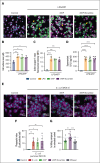Neonatal NET-inhibitory factor inhibits macrophage extracellular trap formation
- PMID: 38810257
- PMCID: PMC11284700
- DOI: 10.1182/bloodadvances.2024013094
Neonatal NET-inhibitory factor inhibits macrophage extracellular trap formation
Conflict of interest statement
Figures


References
-
- Brinkmann V, Reichard U, Goosmann C, et al. Neutrophil extracellular traps kill bacteria. Science. 2004;303(5663):1532–1535. - PubMed
-
- Lee KH, Kronbichler A, Park DD, et al. Neutrophil extracellular traps (NETs) in autoimmune diseases: a comprehensive review. Autoimmun Rev. 2017;16(11):1160–1173. - PubMed
-
- Camicia G, Pozner R, de Larranaga G. Neutrophil extracellular traps in sepsis. Shock. 2014;42(4):286–294. - PubMed
Publication types
MeSH terms
Grants and funding
LinkOut - more resources
Full Text Sources

